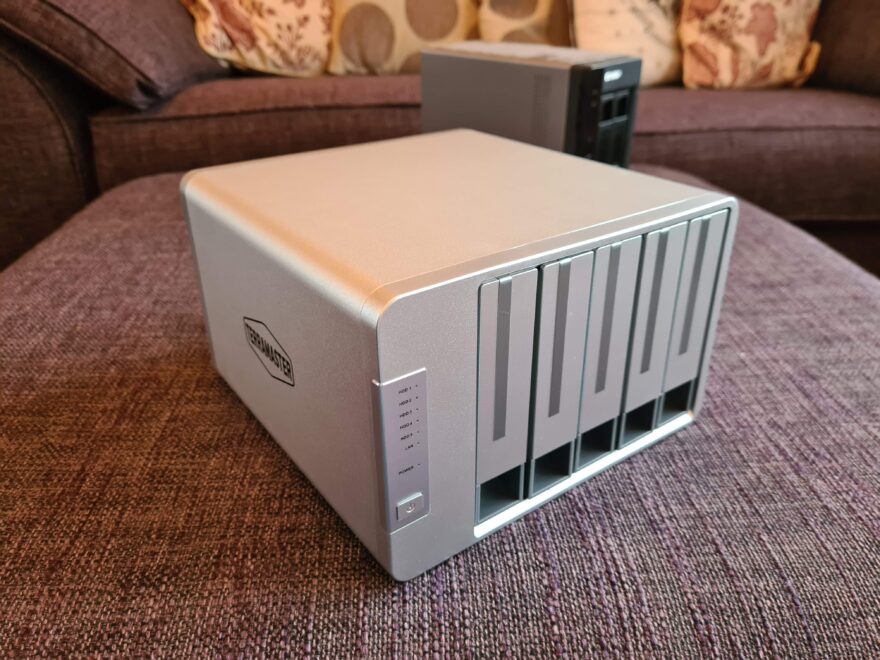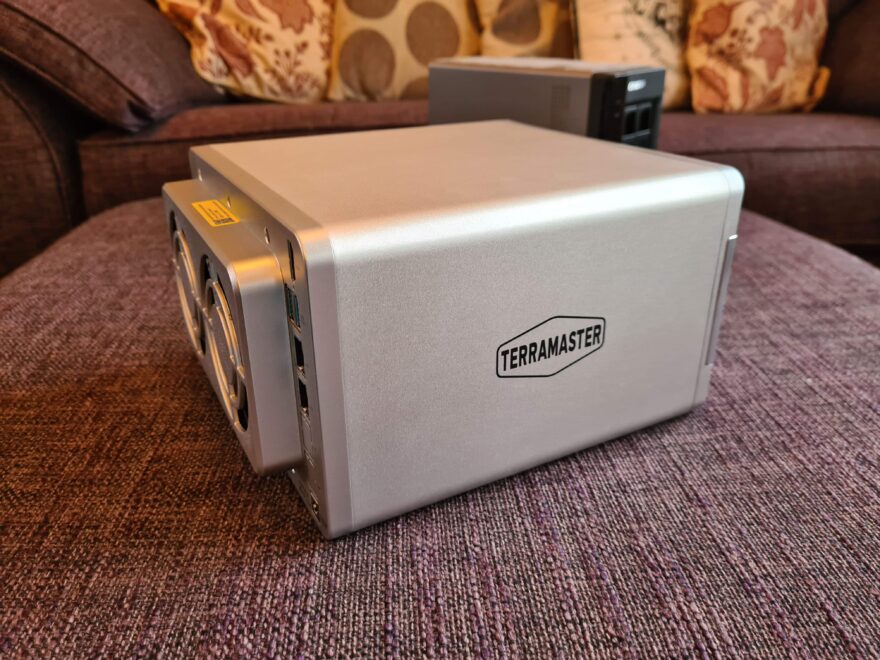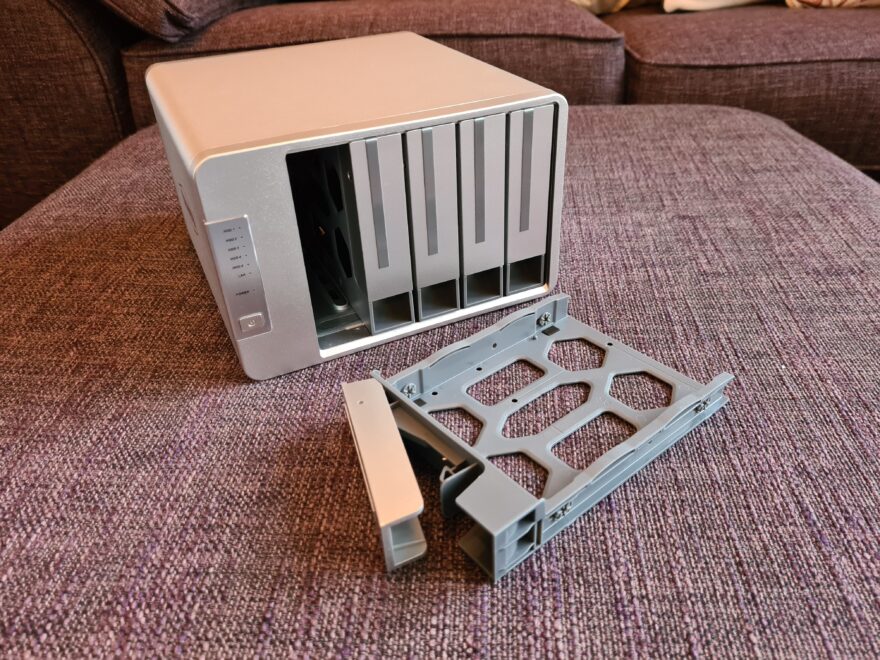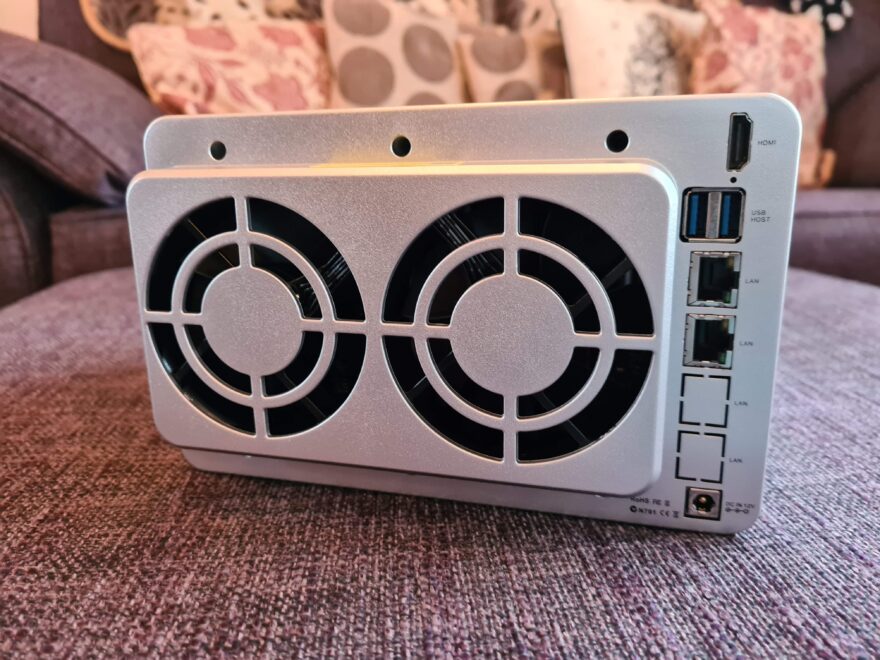Upgrading My Plex Server With a new TerraMaster NAS and Seagate IronWolf Pro Drives!
Peter Donnell / 2 years ago
TerraMaster F5-221 Design
The TerraMaster F5-221 is a great-looking bit of kit, and while admittedly most NAS do look broadly similar, this one does stand out thanks to its metal exterior, with a lightly textured design. I don’t think it’s aluminium, but it does look like sandblasted aluminium and that’s good enough for me. There are some matching silver plastics on the HDD trays and the power button control panel. I won’t lie, they feel a little cheap to the touch, but they do look decent. This isn’t a device I plan to be handling after it’s set up, actually, I’ll be putting some signs on it to warn people not to, so it’s all good.

The tidy design looks great though, and while it’s only a small detail, I like that the corners and edges are rounded, it just looks more friendly than some of the aggressive NAS boxes I’ve seen. For a home NAS solution, it’s pleasing enough to look at. Down the side, there’s a small TerraMaster logo.

Of course, with five-bay drives, it can hold some serious storage too. The drive trays are effectively tool-free, you can just hot-swap them as needed. That being said, screws are included in the box, and I suggest you secure your drives properly in the tray to prevent unwanted vibrations.

The NAS isn’t too heavy on its own, weighing just 3.5KG, as by its very design it’s mostly empty space inside it. However, 5 x high-capacity drives are going to add some serious weight, so consider the total weight if you’re planning on putting it on a shelf or something.

Around the back, cooling is handled by a pair of large PWM fans. They’re pretty robust for a device of this size and should make pretty easy work of cooling without making too much noise. You can change their speed in the software too, should you need to; Smart, High speed, Middle speed, Low speed
Clearly, they use the same chassis for a few units, as there are a few port cut-outs blocked off on this model. However, it does feature an HDMI port at the top, a pair of USB 3 ports, and a pair of Gigabit LAN ports. Not the most complicated setup, but certainly more than enough for my personal needs.

It’ll support 3.5″ HDD, 2.5″ HDD, and 2.5″ SSDs, in Single, JBOD, RAID 0, RAID 1, RAID5, RAID 6, and RAID 10 configurations. This can also include an (up to) 4 x RAID configuration and an SSD cache drive, so you’re certainly not short on options here. As I said before though, I’ll be using RAID 5, giving me 56TB, with 4x read speed, 1x write speed, and 1-drive redundancy. If you’re unsure what capacity your RAID will leave you with, I suggest checking Raid Calculator here.



















